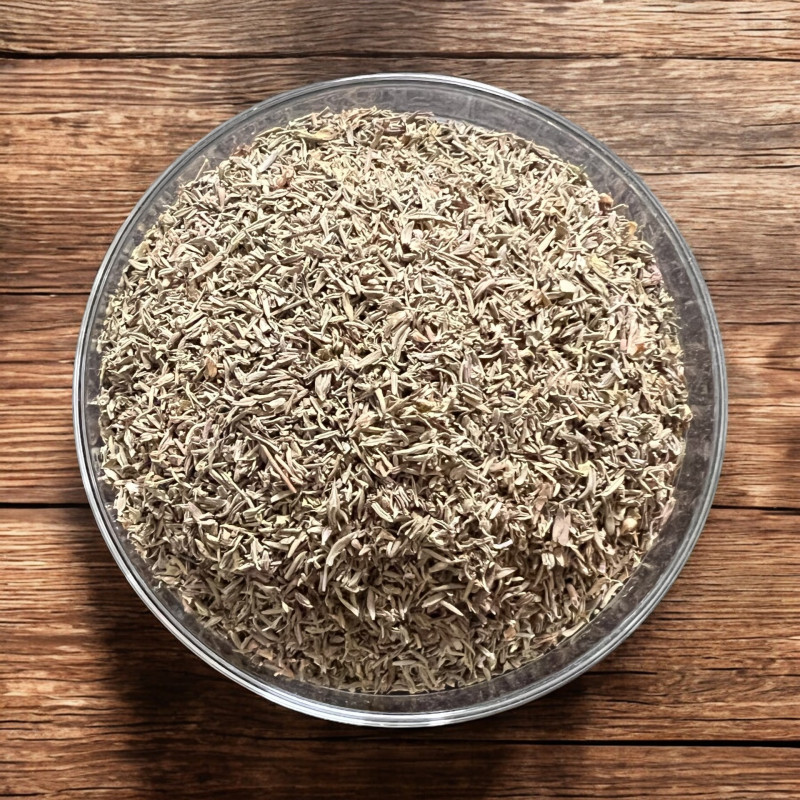
Reference: 021122


Its fragrance is sunny, like that of the garrigue.
It is part of the "Herbes de Provence" blend and pairs particularly well with meats, stuffing, vegetables, and sauces. It is a typical herb in Provençal cuisine.
 Delivery
Delivery
Mondial Relay
 Returns
Returns
See conditions
 Payments
Payments
100% secure
Product delivered in a resealable bag
1) Who am I?
Thyme (Thymus vulgaris), also known as farigoule in Provence, is an aromatic herb native to Egypt and the Mediterranean region. It is a perennial plant in the Lamiaceae family, known for its strong, slightly woody aroma with hints of lemon, depending on the variety. Its leaves and flowers, rich in essential oils, bring a distinctive flavor to many dishes. In addition to its culinary use, thyme has many medicinal virtues due to its high content of thymol, a powerful antibacterial and antiseptic.
2) Culinary use
Thyme is an extremely versatile herb in the kitchen, used in many Mediterranean dishes:
Unlike other herbs, thyme fully develops its aroma when heated, making it an ideal herb to use early in the cooking process.
3) A brief history
Thyme has been used for over 12,000 years in Egyptian, Greek, and Roman cultures. The Egyptians used it for embalming their dead, while the Greeks and Romans burned thyme as an offering to their gods and used it in cosmetics and liqueurs. Its name "thymus" comes from the Greek thumon, meaning "perfume" or "burnt offering," a reference to its use in sacred rituals. It was widely spread across Europe by the Romans, becoming an essential ingredient in both cuisine and medicine.
4) Recipe ideas
Data sheet
Reference: 021122
Reference: laurierE
Reference: 050721
Reference: rosepetale
Reference: 20731803
Reference: 112930001
Reference: 30204501
Reference: 3N7153402
Reference: 20721302
Reference: 00022475-0001
Reference: EPI2301013
Reference: 1P8600602
Reference: grainesaroussir
Reference: 00234301
Reference: 000356960001
Reference: 021122
Reference: 10M6821604
Reference: 20211003
Reference: 1N7004306

Its fragrance is sunny, like that of the garrigue.
It is part of the "Herbes de Provence" blend and pairs particularly well with meats, stuffing, vegetables, and sauces. It is a typical herb in Provençal cuisine.